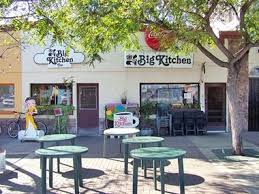
by Rose Davis
San Diego County is the home of a timeless people who have a harmonious relationship with nature. It is this connection that is protected and deemed sacred by elders and leaders who work to maintain this sanctified unification.
Economic conditions within a capitalist system has opened the tribes and reservations surrounding San Diego County to business enterprises that have allowed the people to thrive economically and to develop a political power structure. Economic empowerment fueled by the Gaming Industry is a double edged sword. Many cultural purists resent the intrusion of the greed driven enterprise on their sacred land.
As Chairman Anthony Pico points out, “although gaming has been a great boost we should not take it for granted. It may not always be here. We need other economic tools in order to survive with dignity.” Indian Tourism supports the economic vitality and growth of sustainable enterprises.
Tourism contributes to the well being of indigenous peoples and the preservation of valuable assets: lands, culture, heritage and language. The aim of Indian Tourism is to strengthen the capacity of American Indian tribal communities and individual entrepreneurs to develop enterprises participating in the global tourism market. Entrepreneurs and business oriented people within the Indian community have been caucusing and sharing ideas and plans to develop the tourism market.
Following the lead of the Nevada Conference on Native American Tourism, a conference is being planned to pull together all people and enterprises who might be interested.
Tourism is travel for recreational, leisure or business purposes. The World Tourism Organization defines tourists a people “traveling or staying in places outside their usual environment for not more than one consecutive year for leisure, business and other purposes.”
Tourism has become a popular global leisure activity. In 2011 there were over 983 million international tourist arrivals worldwide, representing a growth of 4.6%. Tourism brings in large amounts of income in payment for goods and services available. It also creates opportunities for employment in the service sector of the economy, including transportation, airlines, cruise ships, taxicabs, casinos, entertainment venues and shopping malls.
Europeans are fascinated by American Indians; several states (AZ & NM) have reservation-based activities to attract such tourists. Furthermore, other states (FL) have driving tours to learn about Indian History. In San Diego County we have 14 populated reservations. If we could develop a bus/driving tour or an ecotourism activity that combines different places/activities on different reservations, we could attract Asian as well as European tourists, history buffs, and others fascinated by Indians. This will require discussions and meetings with tribal councils of all the reservations to learn of their concerns and creative ideas. The Council of American Indian Organizations which represents San Diego County Urban Indians who come from tribes abound the United States can add their perspectives.
Additionally the cultural exchange and coalition building that can result with networking with other indigenous communities is exciting. Judith Meeks CEO of the San Diego Black Wall Street is working with and collaborating with associates interested in promoting African tourism.
Also Clair Carters Multi Cultural Convention Services Network, Dr. Chang and his Chinese Business Network, Karen Huff San Diego Historian can all be major contributors to the project.
Within the context of capitalism tourism is the least toxic and benign enterprise available. It offers an excellent platform for education and cultural exchange. If choreographed correctly it can be non intrusive to the culture that seeks protection from avaricious tourists while providing an answer to Chairman Pico’s desire to push us toward a sustainable self sufficiency.















